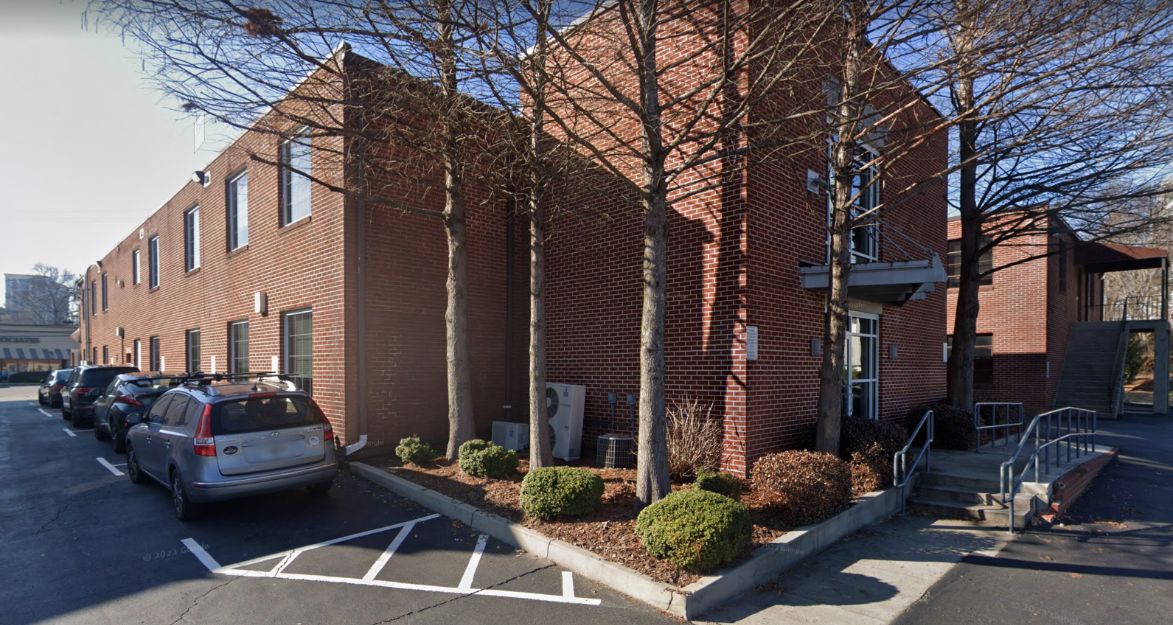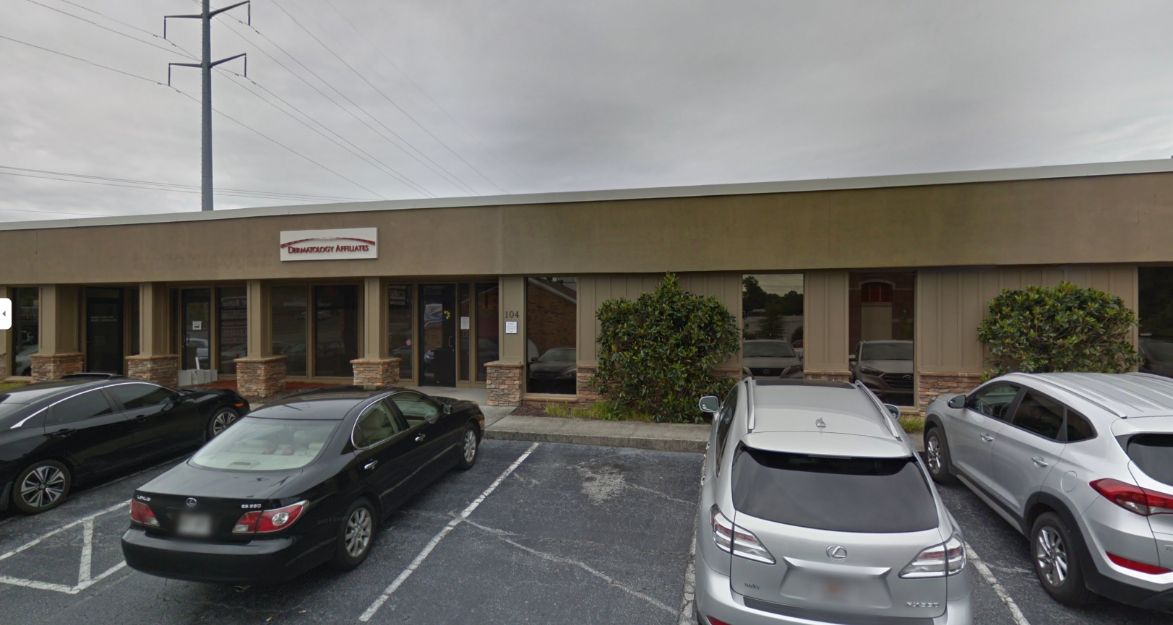Mohs Surgery
What is Mohs Surgery? A Detailed Look at the Procedure
Mohs surgery is a highly specialized and precise surgical technique used to treat squamous cell carcinoma and basal cell carcinoma, the two most prevalent types of skin cancer. The procedure is typically performed under local anesthesia, making it a comfortable experience for patients while allowing them to remain awake during the surgery.
The process begins with the removal of the visible portion of the skin cancer. Once this initial layer is excised, the surgeon meticulously examines the tissue under a microscope, creating a detailed map of the surgical site to identify any remaining cancer cells. This step-by-step examination allows the surgeon to remove only the tissue that contains cancer, preserving as much healthy skin as possible.
The Mohs procedure is repeated in stages, with each subsequent layer of tissue removed and examined until no cancer cells remain. This method ensures that all cancerous cells are eliminated while sparing the surrounding healthy tissue, which is especially important in cosmetically sensitive areas such as the face, ears, and hands.
Because Mohs surgery combines the roles of surgeon and pathologist, it provides an unparalleled level of accuracy and effectiveness. The real-time microscopic analysis of tissue allows for immediate and complete removal of the cancer, reducing the need for additional treatments and minimizing the risk of recurrence.
Following the removal of all cancerous tissue, the surgeon may perform reconstructive surgery to repair the area and ensure the best possible aesthetic outcome. The entire process is conducted in a single visit, making it convenient for patients while delivering the highest level of care.
At Dermatology Affiliates, our Mohs surgeons are highly trained in this advanced technique, bringing together surgical precision, pathological expertise, and reconstructive skill. This comprehensive approach is why Mohs surgery boasts the highest cure rate of all skin cancer treatments, with success rates nearing 99 percent.
Examples of Mohs Surgery
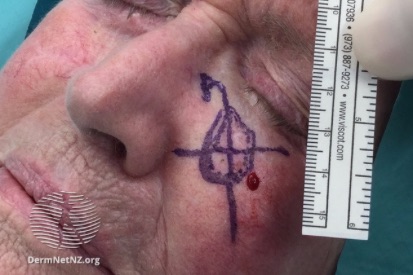
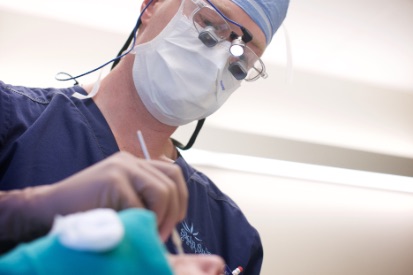
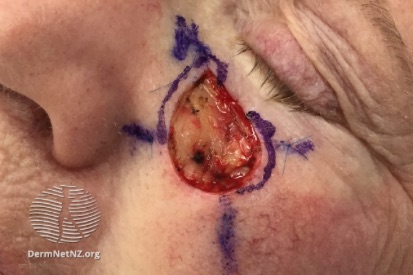
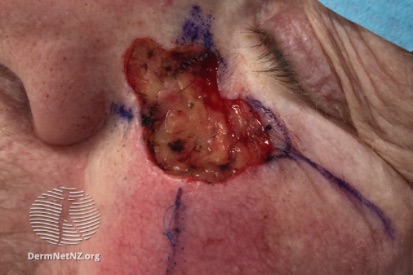
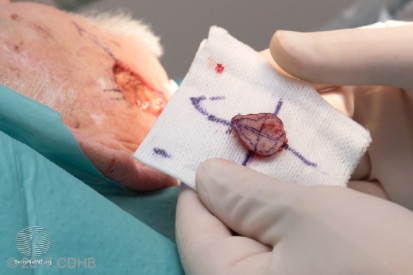
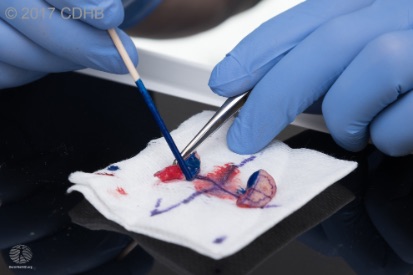
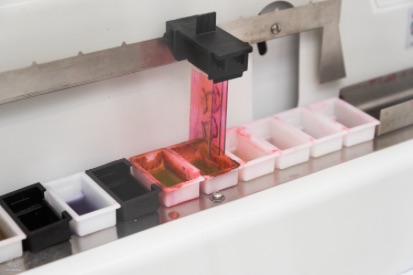
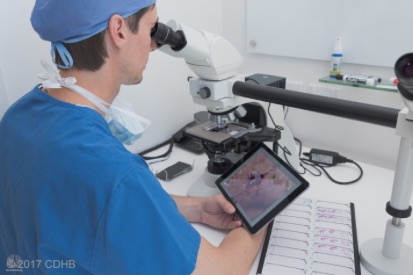
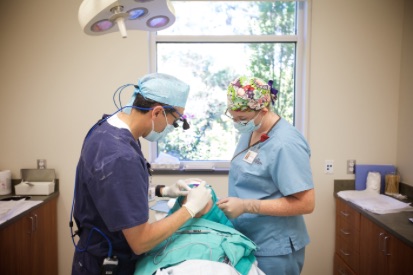
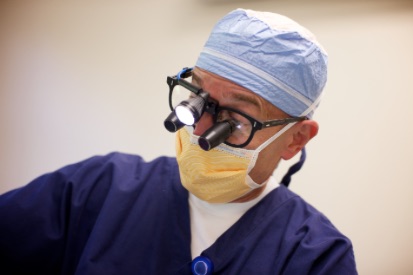
What is Mohs Surgery?
Mohs surgery is a precise, state-of-the-art procedure for removing skin cancer with the highest potential for cure, even for cancers that have returned. Mohs micrographic surgery allows the physician to examine tissue in real time and ensure all cancer cells are removed while preserving healthy tissue.
This meticulous approach makes Mohs surgery for skin cancer especially effective for basal cell carcinoma, squamous cell carcinoma, and early-stage melanoma. By targeting the entire tumor down to its roots, Mohs surgery maximizes cure rates and minimizes scarring, giving patients confidence and peace of mind.
This procedure is most often used in treating three of the most common forms of skin cancer: melanoma, basal cell carcinoma and squamous cell carcinoma.Mohs Surgery Benefits
Mohs surgery is the most precise method for removing skin cancer, providing patients with confidence in both the effectiveness of the treatment and the preservation of healthy tissue. Performed by specially trained dermatologic surgeons, this technique carefully removes cancer layer by layer while examining each section under a microscope, ensuring thorough treatment and optimal outcomes.
Key benefits of Mohs surgery include:
- Maximized tissue preservation – Healthy skin is spared, reducing scarring and maintaining natural appearance.
- Targeted cancer removal – Every layer is examined to ensure the entire tumor is removed.
- Effective for high-risk areas – Ideal for delicate regions like the face, ears, and hands.
- Lower recurrence rates – Reduces the chance of skin cancer returning compared to other methods.
- Customized reconstructive options – Surgeons can repair the site immediately, improving cosmetic and functional results.
Mohs Surgery in Atlanta, GA: Dermatology Affiliates
At Dermatology Affiliates, our Mohs surgeons are board-certified and specialize exclusively in Mohs surgery and related dermatological procedures. This focused practice allows them to refine their skills and stay updated on the latest advancements in the field.
Our patient promise is dedicated to your care. Our Mohs surgeons undergo extensive training beyond medical school and residency to ensure you receive comprehensive skin cancer care.
Mohs Surgery FAQs
Mohs surgery is highly effective, with cure rates of up to 99% for basal cell carcinoma and squamous cell carcinoma when performed in the early stages. Its precision in removing cancerous cells while sparing healthy tissue makes it one of the most successful treatments for skin cancer.
No. Mohs surgery is performed in a pleasant outpatient surgical suite and you may return home the same day. Hospital facilities are available if necessary.
The duration of Mohs surgery varies depending on the size and complexity of the cancer. On average, the procedure can take several hours, as each layer of tissue must be carefully removed, processed, and examined under a microscope before proceeding to the next layer. Patients should plan to spend the majority of the day at our clinic.
Yes. Any form of treatment will leave a scar. However, because Mohs surgery removes as little normal tissue as possible, scarring is minimized. Immediately after the cancer is removed, we may choose (1) to leave the wound to heal itself, (2) to repair the wound with stitches, or (3) to reconstruct the wound with a skin graft or flap. This decision is based on the safest method that will provide the best cosmetic result.
Will I need to come back? Usually one return visit is all that is needed to examine the healed surgical site or to remove your surgical dressings. Afterwards, you may return to your referring physician for routine check-ups. Lifetime annual check ups are considered essential. After having one skin cancer, statistics show that you have a higher chance of developing a second skin cancer. You should have your skin checked by your physician at least once each year for four years, not only to examine the treated skin cancer, but also to check for new skin cancers.
The most effective way to protect yourself from skin cancer is to avoid the harmful ultraviolet (UV) rays from the sun. Even if you tan easily, sun exposure can contribute to skin cancer in two significant ways. Firstly, sunlight can damage the genes that regulate cell growth, and secondly, it can weaken the immune system, allowing early-stage cancers to develop unchecked by the body’s normal defenses.
To minimize your risk:
- Apply sunscreen with an SPF of at least 30, ideally with UVA/UVB protection, whenever you’re in the sun.
- Limit sun exposure during peak hours, typically from 10:00 am to 4:00 pm.
- Remember that UV rays can penetrate clouds, so protect your skin even on cloudy days.
By following these guidelines, you can enjoy outdoor activities without significantly altering your lifestyle or risking skin cancer.
From our QualDerm Family of Brands: Mohs Surgery for Skin Cancer
What to Expect at Your During Your Mohs Procedure
During Mohs surgery, your procedure combines precise surgical removal with real-time microscopic analysis. The goal is to remove all cancerous tissue while preserving as much healthy skin as possible.
Here’s what typically happens:
- The visible tumor is carefully removed.
- Your surgeon creates a detailed “map” of the excised tissue to track any remaining cancer cells.
- Each layer of tissue is examined under a microscope.
- If cancer cells are detected, another thin layer is removed only from the affected area, then re-examined.
- This process repeats layer by layer until the tumor is eliminated.
By systematically removing only diseased tissue, Mohs surgery maximizes the chance of complete cancer removal while minimizing impact on surrounding healthy skin. Patients benefit from precision, safety, and the best possible cosmetic and functional outcomes.
How to Prepare for Mohs Surgery
To help ensure a smooth Mohs surgery experience, shower and wash your hair on the day of your procedure and eat your usual breakfast unless instructed otherwise. Bring a list of medications and be ready to complete a brief medical history form.
Upon arrival, complete a medical history form, bringing a list of medications. Discontinue Erectile Dysfunction medication 72 hours before surgery. Avoid alcohol for 48 hours before surgery and follow your provider’s guidance on medications such as aspirin, ibuprofen, or certain supplements. Skip makeup, perfume, nail polish, and jewelry, and arrange transportation if a sedative will be used. Your Mohs surgeon will provide personalized instructions to ensure you are fully prepared.
Planning for Recovery after Mohs Surgery
After Mohs surgery, plan for a smooth recovery by arranging transportation home, as you may feel groggy from anesthesia. Take it easy for a day or two, avoiding strenuous activity, and follow your surgeon’s post-operative care instructions carefully, including keeping the wound clean and dry. Most patients only need a single follow-up visit to examine the surgical site or remove dressings.
Ongoing skin health is important after treatment. Patients who have had skin cancer are at higher risk of developing it again, so lifetime annual skin exams and dermatological checkups are recommended. Your dermatologist will monitor both the treated area and your overall skin to catch any new cancers early.
Featured Blogs

- General Dermatology
As the U.S. population ages, the number of Americans who suffer from skin diseases will continue to rise, according to the American Academy of Dermatology (AAD).
Read More
- General Dermatology
- Sun Safety
- Skin Care
Earlier in May, a pilot study was published that showed high concentrations of 4 chemical sunscreens in the blood. This study was done over 7 days with 24 people using different mixtures of chemical sunscreens in spray, lotion, or cream forms.This was a small study to see if there was reason to really study absorption through the skin.
Read More
- Skin Cancer
- General Dermatology
- Sun Safety
A skin cancer story shared by a Dermatology Affiliates employee. Learn how easy it is for skin cancer to sneak into your life in many ways.
Read MoreFeatured Products
Check your local office for current stock!
Check your local office for current stock!

